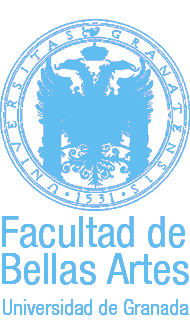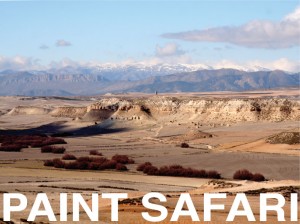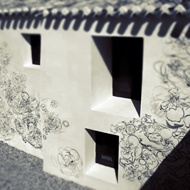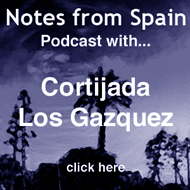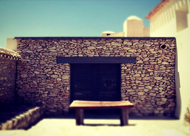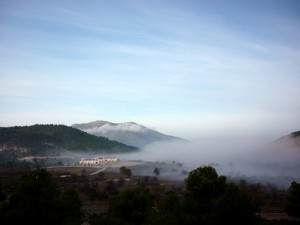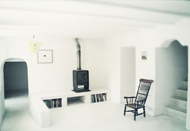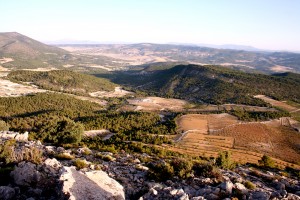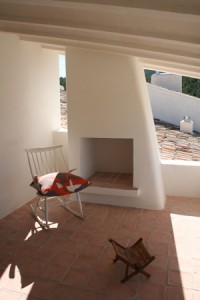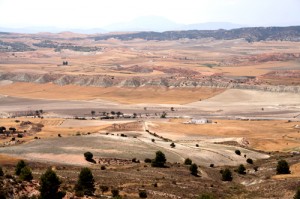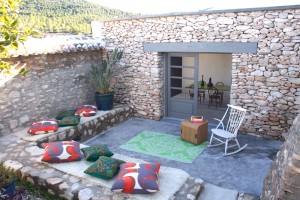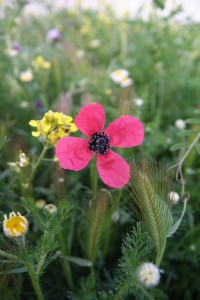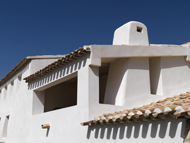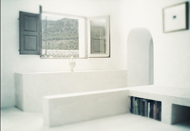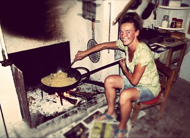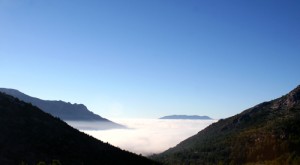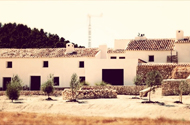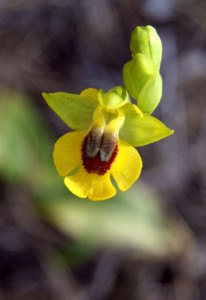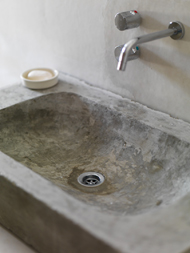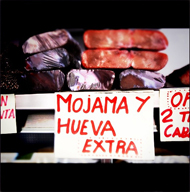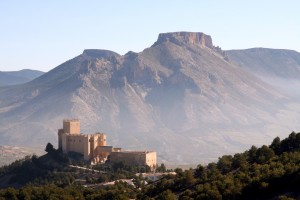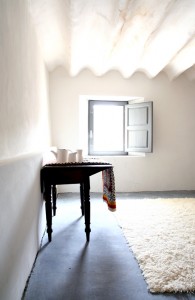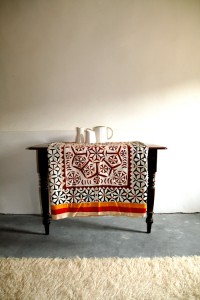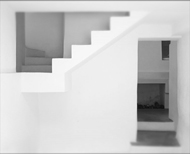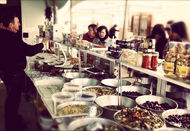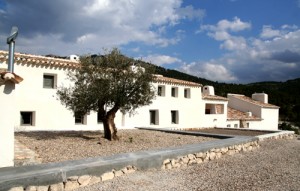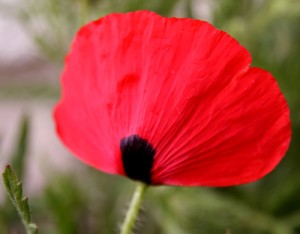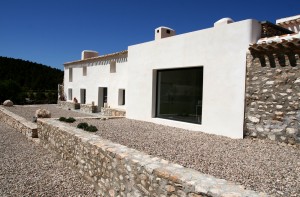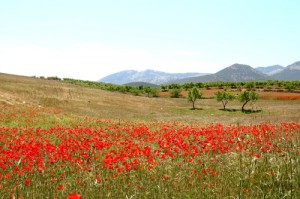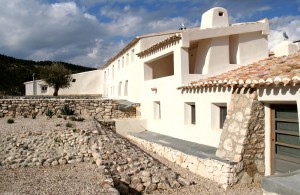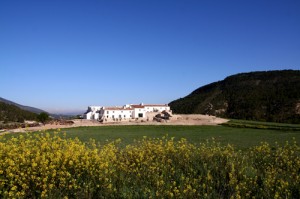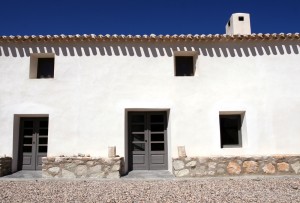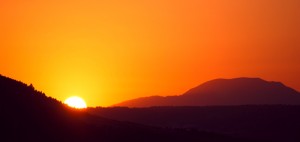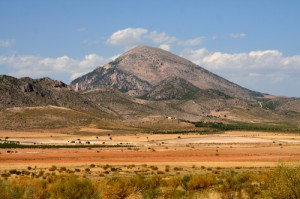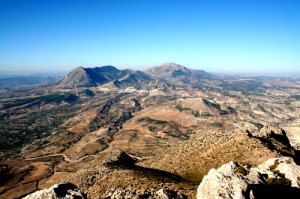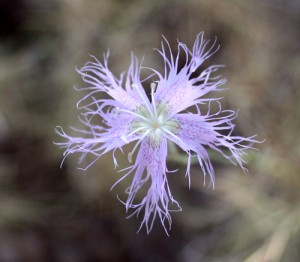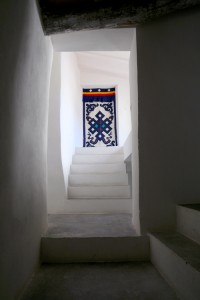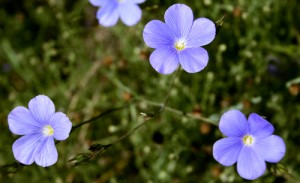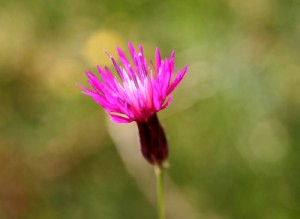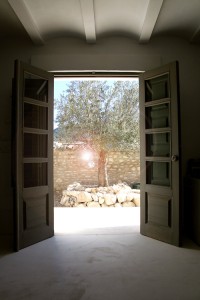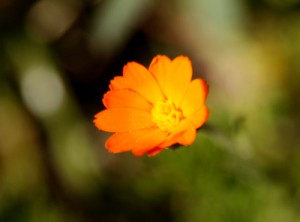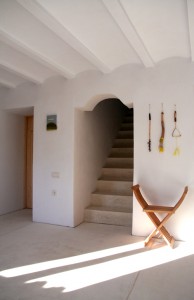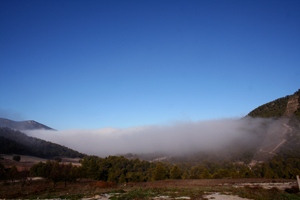May 23, 2010 at 2:08 pm
· Filed under Artistas que admiramos
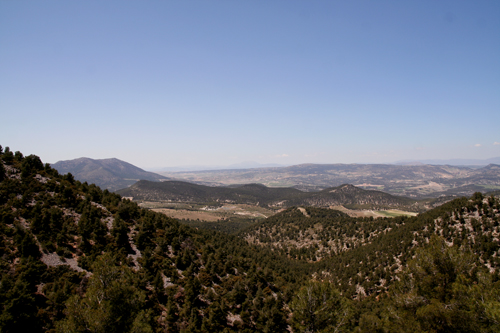
Yesterday found my brother and niece, Maxine and I exercising a tip given to us by a local shepherd. We made a short expedition to find some pre-historic cave paintings. Leaving mid morning the going was quite tough, climbing as we were up a steep barranco, the heat from the sun trapped in the narrow gorge. The scramble, as it was, gave some immediate rewards with orchids such as this Dactyorhiza elata (please feel free to correct me if my identification is wrong!)…
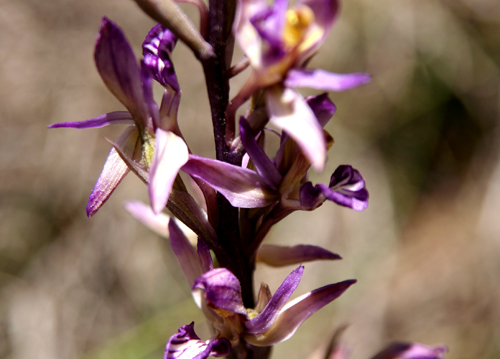
The climb was over limestone screeds populated with pine trees and Kermode and Spanish oaks…
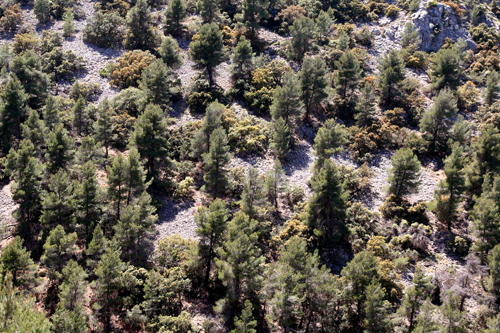
Maintaining a foot hold was a tricky business but as we ascended the barranco nearing the top we could see our goal…
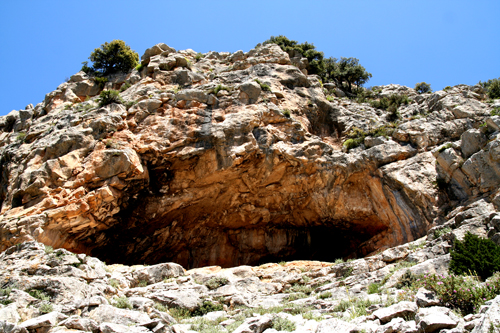
Flora changes at this altitude and it’s great to see one of my favourites growing in the wild. Verbascaum bombisiferum…
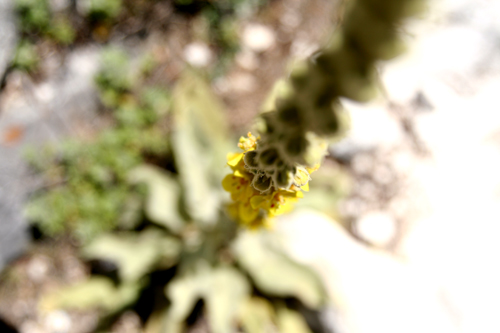
At last reaching the cave we found some relief from the heat and sat in the cool cave mouth admiring the view. Maxine seemed to have found some primordial dog instinct that allowed her to sit regally in the cave watching her territory…
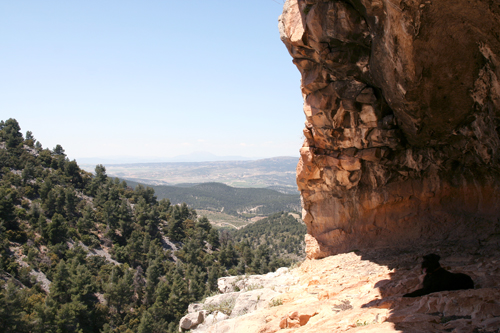
But where were the cave paintings? We searched hard, high and low, looking for indistinct marks in the limestone rock face and at last, there it was…
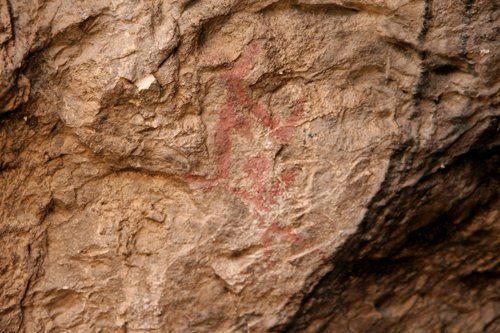
At first we thought it was a fish but then we decided that it must be two figures in some acrobatic activity. If this drawing is contemporary with the drawings in the more famous Cueva de los Letreros and Ambrosia, in this region, then it is over 4000 BC or 6010 years old. This is a drawing from Palaeolithic or Neolithic Andalucian ages. This is from a time before what we consider the age of modern humans, who came from southern France and the eastern Mediterranean.
This artist stood here all those years ago watching natural phenomena such as the East Atlantic Flyway (the north south migration of birds from Africa to Northern Europe), he (or she) considered himself as part of this environment, it’s cycle of life and death.
I like the idea that this artist also decorated his/her own body with the same materials he used to paint the walls of this cave. Archeology in Murcia has located sea shells used for pigment extraction and black manganese. What a creature it must have been and what a great discovery for us.
Permalink
May 20, 2010 at 9:48 am
· Filed under 'PAINT SAFARI', Landscape
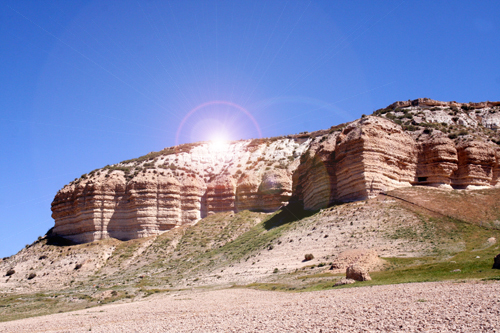
The day was spent looking at the canyon (cañón) on the alto plano. This is age old erosion from the plateau level where strata of sandstone being harder than the limestone are resistant to weathering. It’s a geological characteristic typical of arid zones. Many of the cliff walls are actually punctured by the remains of traditional cave houses. They are now sadly uninhabited by humans and are the reside of goats and sheep.
The bottom of this shallow canyon is more fertile and used for spring cereal crops. It’s planted in a mosaic of oblong patches declaring the ownership and fertility of specific areas of bright green spring grains. Borders are of germolene pink and khaki green Tamarix and as you look up to the canyon wall, showers of feldspar catch the sunlight and glisten.
Permalink
May 18, 2010 at 8:35 am
· Filed under Plantlife
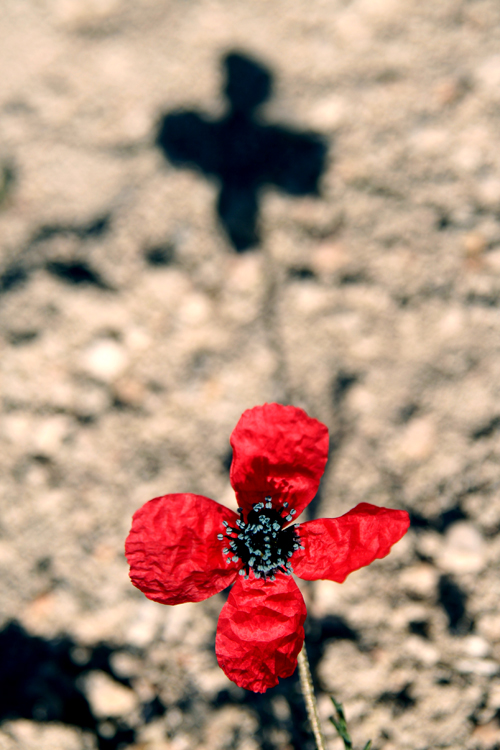
Art Forms in Nature 29th May - 5th June
Natures own ‘Cross Fleury’ early this morning at Los Gázquez. If we included variation determined by situation I could photograph a different poppy for each day of the week, just on our doorstep.
Permalink
May 17, 2010 at 10:41 am
· Filed under Joya; aplicado
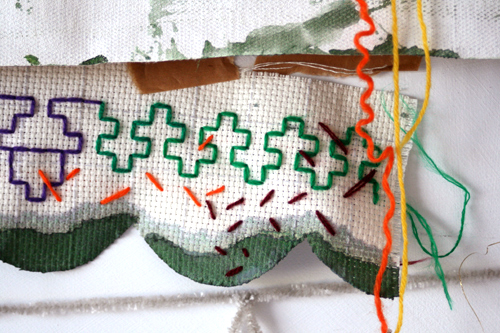
..satin stitch/zigzag, ‘graphic line on a sewing machine making a mark as opposed to a seam‘. Following a grid. Quilting paper ‘used as a graphic design in itself‘.Primed linen/fluorescent map pins. Dribbling paint/blotching paint. Gold lame, chenille, counted thread embroidery. Spanish Black Work embroidery, ‘geometrically similar to 80′s computer graphics, like pixels’. ‘Experimental work taken from the landscape, capturing colour‘. Batik wax, ‘dripping and staining etc.‘. Patchwork, ‘making painted surfaces to cut out…’.
Joya resident artist Lizzie Finn will be talking about her work at Cortijada Los Gázquez on Tuesday 18th May 2010 8 pm. All are welcome.
Lizzie Finn was being talked about in this Sunday’s Independent…
and you can see some of the finished work here…
Permalink
May 10, 2010 at 5:19 pm
· Filed under 'PAINT SAFARI', Creative Course / Art Forms in Nature, Joya
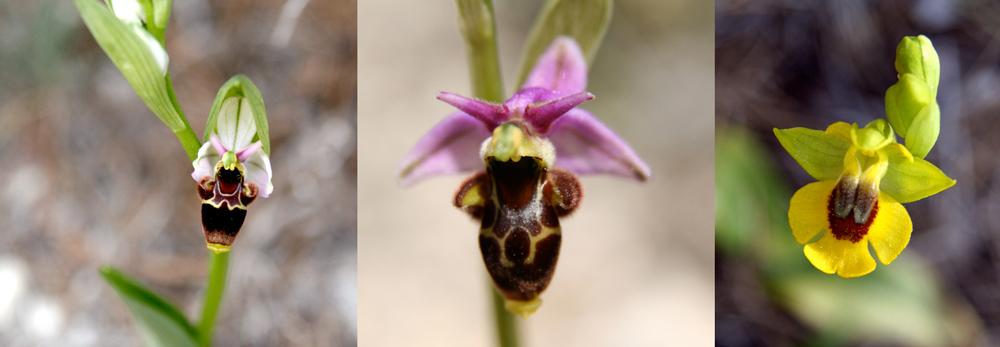
Cortijada Los Gázquez and the Joya Residency Newsletter 1st-15th May 2010
Creative Course ‘Art Forms in Nature’ 8th-15th May
 This weeks Art Forms in Nature course has been heavily complimented by an abundance of orchids flowering in the fields and forest edges around Los Gázquez. Also artist, landscape designer and all round plants person, Sue Amos, is also here to lend a hand. Sue is the education officer for the South London Botanical Institute and she has had a great idea to make an audit of plant species naturally occurring here at Los Gázquez which is turning out to be facinating. Apart from the orchids there are an abundance of other wild flowers providing a huge amount of inspiration with their myriad of natural form.
This weeks Art Forms in Nature course has been heavily complimented by an abundance of orchids flowering in the fields and forest edges around Los Gázquez. Also artist, landscape designer and all round plants person, Sue Amos, is also here to lend a hand. Sue is the education officer for the South London Botanical Institute and she has had a great idea to make an audit of plant species naturally occurring here at Los Gázquez which is turning out to be facinating. Apart from the orchids there are an abundance of other wild flowers providing a huge amount of inspiration with their myriad of natural form.
Art Forms in Nature is an ‘applied arts’ programme where one can explore the nature of form and pattern occurring in the natural world. You are then given the opportunity to consider and develop a practice of manipulating these forms in preparation for ‘applied’ or ‘decorative’ arts, be it for wallpaper, ceramics, furniture, graphic design, textiles, etc. The choice is yours. Correspondingly…
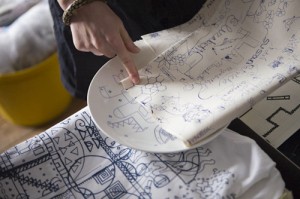 Joya Resident Artist / Lizzie Finn
Joya Resident Artist / Lizzie Finn
Joya resident artist Lizzie Finn is an artist who applies natural form in her embroidery and appliqué work. Lizzie has been searching the land for geometry in natural form and making large hand stitched and sewn assemblages.
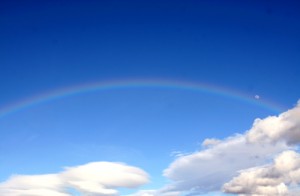 Paint Safari
Paint Safari
And for landscape artists (professional or amateur/with or without tuition) Los Gázquez operates Paint Safari, something unique and very exciting.
For more details contact Simon at [email protected] and please pass this on to family and friends. If you would like to sign up to receive our newsletter please enter your e mail address here.
Permalink
May 10, 2010 at 4:55 pm
· Filed under Landscape
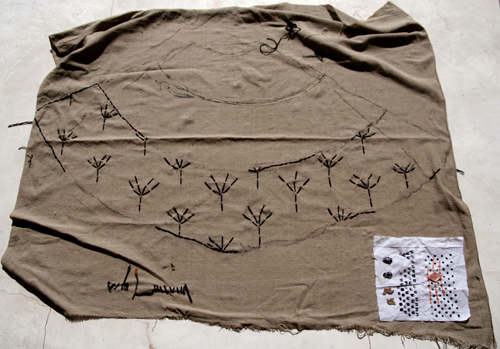
Joya resident artist Lizzie Finn has actually been here for a few days now. She has been acclimatising, walking around our land, collecting little natural and organic objects and working on ideas.
I’ll keep you posted…
Permalink
May 9, 2010 at 6:58 pm
· Filed under Plantlife
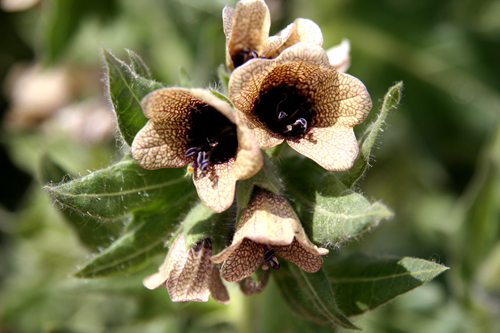
While Sue and I are carrying on with our audit of wild plant species at Los Gázquez we came across this strange creature. Cream petals with brown, slightly geometric, varicose veins and purple stamens. Furry leaves and a starchy leaf quality. Nature has a way of letting you know when something is potentially unpleasant even if it is fascinating.
It’s Hyoscyamus niger or Henbane. It’s also known as stinking nightshade and is highly toxic. It has hallucinogenic properties as well as anaesthetic and was often used with deadly nightshade, mandrake and datura for it’s psychoactive qualities as well as making beer in Germany in the 15th century.
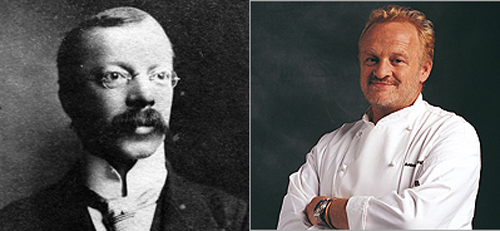
‘Dr Crippen and Antony Worrall Thompson’ you ask! Well the infamous homeopathic doctor from America poisoned his wife with henbane and was the first criminal to be apprehended by wireless communication. Antony Worrall Thompson tried to poison his readers with henbane in Healthy and Organic Living Magazine suggesting that henbane was ‘a tasty addition to a salad’.
Permalink
May 9, 2010 at 1:01 pm
· Filed under Plantlife
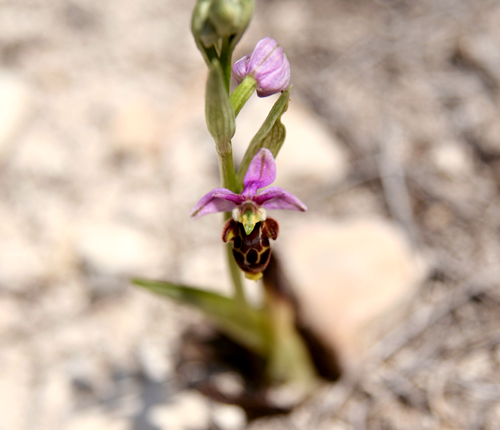
As part of our Art Forms in Nature course friend of Los Gázquez Sue Amos is here to lend a helping hand.
Whilst scouring the land for interesting material Sue suggested that we should start an inventory of the wild flowers here up in our part of the park. I felt immediately enthusiastic about the idea and Sue immediately spotted this beautiful little orchid. We knew it was a bee orchid but which one?
It was time to consult the awesome Iberian Nature Forum. And whilst there I thought it would be fun to demonstrate to Sue just how brilliant a human resource this is. So, I posted a request for an orchid ID along with a photograph of the flower and I let the members know that it’s identification was a race and that I would blog the winner. Well, I posted yesterday at 19.15 and got my first reply at 19.31 from senior member Dave from León…
Hi Simon
Bee Orchid,which one no idea, I claim my prize
Regards
Dave 19:31
Well Dave that’s impressive but the first full ID was from Jesús at 20.23…
I think you must look for Ophrys apifera or Ophrys scolopax.
Regards
Jesús
This was seconded by full member Mick at 20.36 confirming the scolopax ID and confirmed again by Andrés at middnight and backed up on his fantastic web site Flores de Almería
Thank you gentlemen and let me give the prize to the forum.
Permalink
May 6, 2010 at 12:35 pm
· Filed under Joya; aplicado
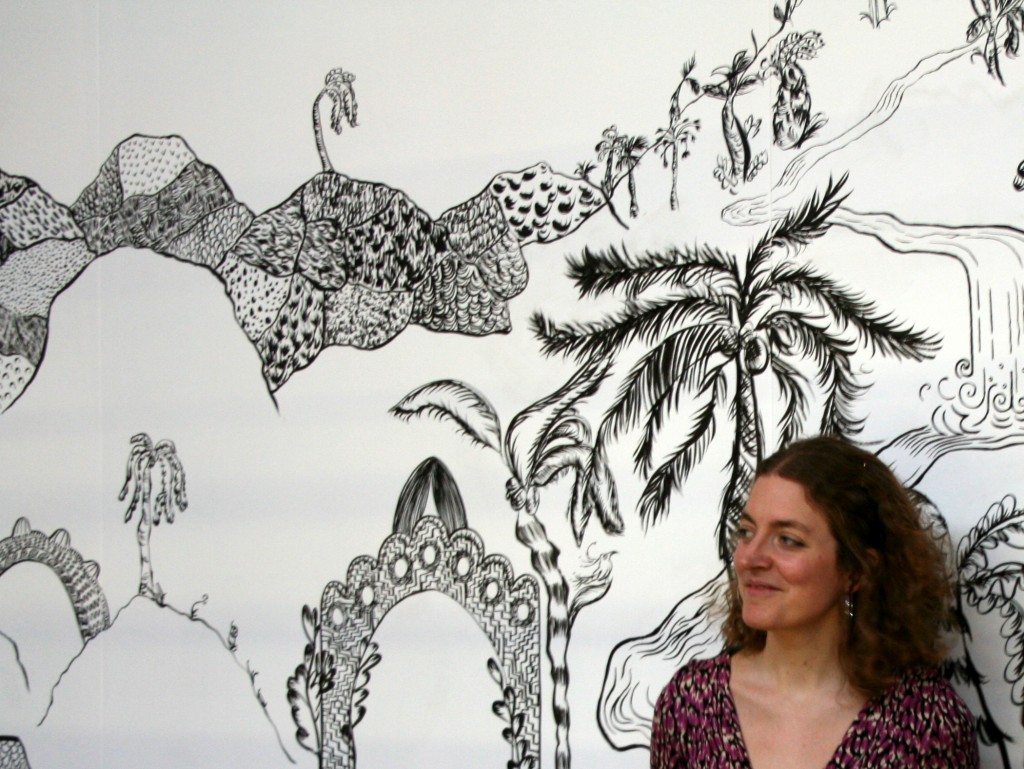
September welcomes Joya; aplicado artist in residence Ellie Curtis to Cortijada Los Gázquez. Ellie is an illustrator, printmaker on paper and fabric and muralist as well as a printmaking teacher.
‘I’d like to create a set of fantastical narrative illustrations based on the natural surroundings of Cortijada Los Gázquez. These will be informed by nature drawings I make on investigative walks, facts which I’ve already researched on the formation of the mountains, and a story that I will invent revolving around some very ambiguous characters. I usually use a lot of printmaking in my work but I’d like to use this residency as an opportunity to break free from such a methodical approach to image making, and work in a more spontaneous way, simply drawing and painting. I might try animating some of the characters and and potentially use different media such as quilting to tell parts of the story’.
You can see more of Ellie’s work here. As well as www.elliecurtis.com and www.eastlondonprintmakers.co.uk
Permalink
May 5, 2010 at 12:29 pm
· Filed under Joya
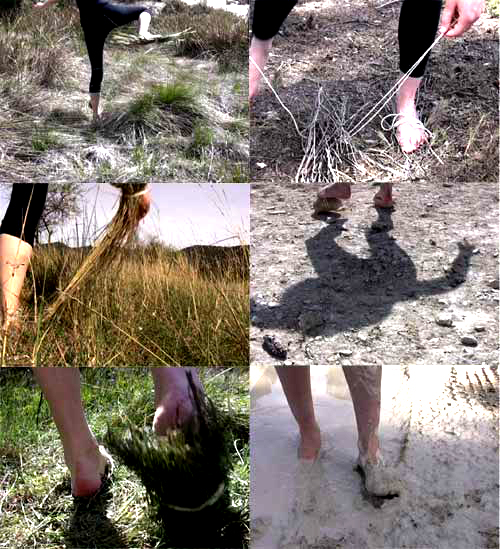
In tactile terms we initially encounter our external environment through the contact our feet make with the ground. Finding a large number of decomposed shoes in the land around Los Gázquez inspired me to explore how shoes mediate this experience or moment of contact between the body and the environment. To do this I carried out a number of controlled experiments at different locations around Los Gázquez wearing ‘shoes’ made from materials gathered at each site, resulting in a series of environmental walks physically mediated by each environment.
I also added a shoe of my own to the collection I´d found. Modelled on my own foot this differs from those found in that it´s created entirely from natural materials; acorns, lichen and plant stems taking the place of metal buckles and plastic edging.
Trish Scott
You can see Trish Scott’s finished video pieces on her website www.trishscott.com
Permalink












 This weeks
This weeks 









